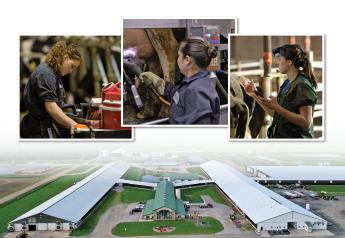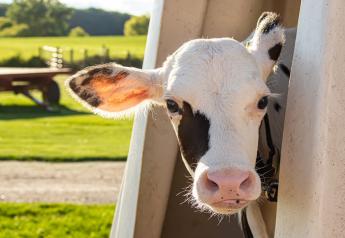Researchers Zero in on Liver Abscesses for Beef-on-Dairy

Liver abscesses are a silent scourge in cattle feeding, robbing the industry of both performance and profit. And they are hitting dairy-beef-cross animals the hardest.
According to Michigan State University Extension, liver abscesses are not a new issue, having been associated with cattle consuming primarily grain-based diets as early as the 1930s. But they remain a costly challenge.
Michigan State Extension Beef Specialist Jerad Jaborek noted that livers condemned at slaughter represent an annual loss to the U.S. beef industry of more than $60 million. And that does not take into account the approximately 5-15% ding to average daily gain, and 9.7% reduction in feed efficiency they also actuate.
Further costs are incurred at the harvest level, where carcass tissue around an infected site may need to be trimmed by hand, and a burst abscess can cause chain stoppage in a plant for an hour or more.
Liver abscesses are also on the rise. According to the National Beef Quality Audit 2018, the incidence of liver abscesses in finished animals had risen from 9.9% in 2010-11, to 19.3% in 2016-17.
This piles more issues onto the plate of concerns about the issue, because feeding an antibiotic – most commonly tylosin phosphate – is currently the most effective strategy to control the problem.
But more liver abscesses means more prophylactic antibiotic use, at a time when regulatory bodies and consumer groups are calling on livestock producers to reduce their antibiotic use in food animals, not raise it.
One of the most frustrating aspects of liver abscesses is that animals show no signs of them, so they are only detected at harvest. “After decades of studies, researchers haven’t found an accurate way to predict nor diagnose liver abscesses,” said Rand Broadway, a research scientist with the USDA Livestock Issues Research Unit.
A research team at Kansas State University is working to change that. They recently found that biochemicals unique to liver abscesses could be used as biomarkers to detect them in live cattle.
They are using that knowledge to develop a diagnostic test, which they say could indicate whether an animal’s liver is abscessed while it is still alive. They say their molecular-level work also could provide insight into when cattle get liver abscesses; evaluate intervention strategies for abscessed cattle; and possibly assist in effectively managing cattle by providing information about liver abscess status to feedlots.
Meanwhile, a cooperative endeavor between USDA’s Agricultural Research Service (ARS), Texas Tech University, Kansas State, and West Texas A&M University is aiming to develop reliable and repeatable models to identify triggers for the condition.
“Our study is a huge collaborative effort between USDA and academic partners to develop a liver abscess model in cattle that can help us better understand how liver abscess formation begins,” noted Broadway. “We are constantly learning about the causes and development of these abscesses.”
Their initial work shows an even higher prevalence of liver abscesses of approximately 50% in the dairy-beef-cross steers they have evaluated. They selected that subset of animals because it is the population of cattle that most commonly suffer from the infection.
So far, they have discovered that the causative bacteria may not always originate from the rumen as previously thought, and may instead come from the lower gastrointestinal tract.
According to Jaborek, previous attempts to control liver abscesses with ionophores and essential oils have been relatively unsuccessful, but research efforts to develop vaccines against liver abscesses are also underway.
Broadway said the USDA-university conglomerate also hopes to arrive at non-antibiotic solutions. “We seek to use the knowledge gained from these models to develop alternative interventions, such as nutritional management strategies,” he said.
For more on Beef-on-Dairy, read:
- America's Heifer Shortage is Preventing Expansion. Is the Big Money for Beef-on-Dairy a Factor?
- Beef-on-Dairy: Why Feedlots Crave This Important Information
- How to Increase the Marketability of Beef-on-Dairy Calves
- 8 Reasons Why Beef-on-Dairy Makes the Perfect Cross
- It Pays to Prevent Respiratory Disease in Feedlot-Bound Cattle







